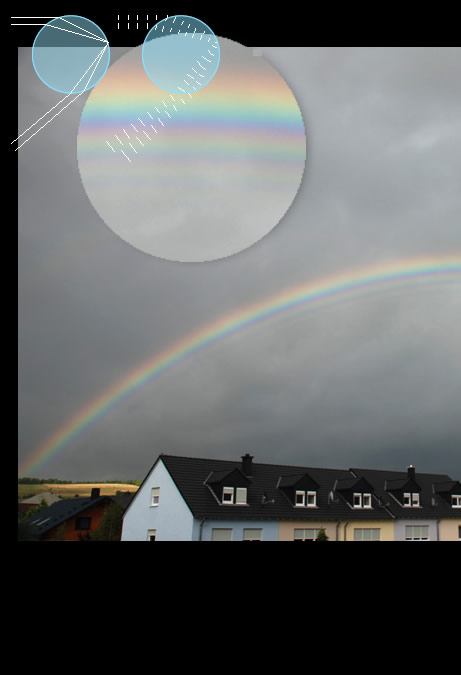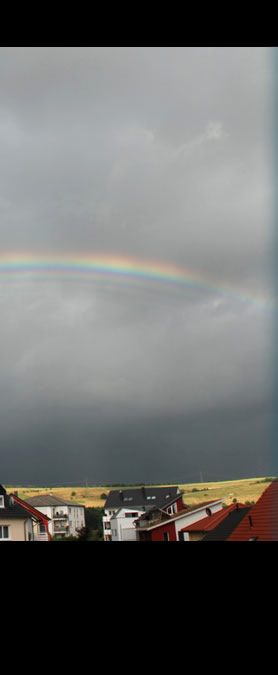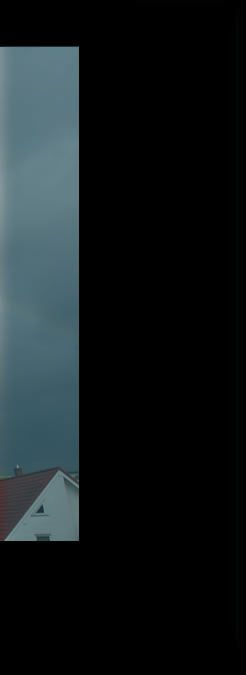Rainbow with
Supernumeraries imaged
by Eva Seidenfaden (Paraselene
Optics Site) at Trier, Germany on June
27th '08. ©Eva
Seidenfaden, shown with permission.
Supernumeraries, coloured fringes inside a primary rainbow were supposed
not to exist. They could not be explained by geometric or Newtonian optics.
They are a consequence of the wave nature of light.
Light can take two paths (top left) through a raindrop and yet emerge deflected
through the same angle to contribute to a rainbow.
Replace the classical rays by waves (right drop) and we can see how supernumeraries
form. In the example, the emerging two sets of wave crests are out of
step and no light would be seen at that angle. As the emergence angle changes
the waves alternate between being in step and out of step. The result,
the light and dark interference fringes we call supernumeraries.
As Eva's close-up shows, the supernumeraies are predominantly green and purple
hued. Waves of different frequency (colour) have different fringe
spacings and
overlap to form the complex hues. Why
do supernumeraries appear mostly near the bow top? That is another
story.
|



